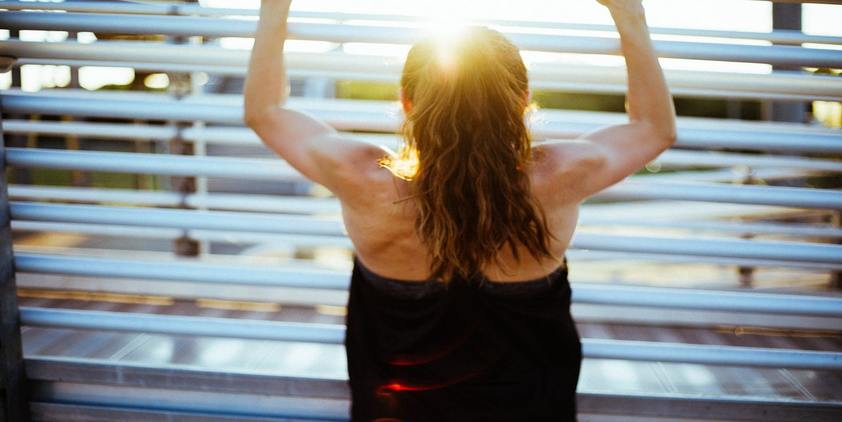

January 14, 2019 | Categories: Fitness
Will transitioning your workout to a heated environment help you reach your fitness goals faster? Should you train at midday instead of mid-morning this summer to maximize the high temps and amp up the sweat factor? To find out, we chatted with Jessica Matthews, exercise physiologist for the American Council on Exercise. She reveals whether or not a sweat-soaked shirt means you actually burned more calories — and discusses how to complete hot workouts safely.
Go for the burn. Burn calories. It’s no wonder these two common exercise clichés connote fire and heat: When we work out like maniacs, our muscles do feel like they’re on fire. In fact, many of us feel like if we’re not hot and sweaty, we’re not doing it right. But is that true — and if so, should we seek out ways to heat things up even more while we exercise? In other words, should we heat up our environments, too?
Sweating is the cooling process your body goes through to help you maintain a steady body temperature — but it’s no workout indicator. “We have this association that sweating equals calories burned, and that’s actually not accurate,” says Matthews. “Every body is different and sweats differently, and how much or how little you sweat doesn’t equate to the number of calories you burn.”
Does it help at all to turn up the heat in order to sweat a little more? It may. A study done on 20 highly trained cyclists found that there are some research-proven benefits of working out in heat — including an improved sweating/cooling process, enhanced blood flow through the skin and expanded blood volume.
A part-time yoga teacher, Matthews says that hot workouts are becoming most popular in the yoga arena, first with Bikram (done in 103- to 107-degree heat), and then with other hot-style yogas such as Vinyasa and CorePower Yoga, a yoga-infused weight-training program performed in 92- to 95-degree heat. Another growing trend? Group cycling classes in heated rooms.
“I think there are a lot of benefits from practicing yoga in the heat,” says Matthews. “People really like how it feels and how their bodies are able to perhaps move deeper into postures because of the external heat. But it’s so important for safety purposes that they have an established base of knowledge before they’re trying these poses in a heated environment.” Before adding the additional challenge of heat to your yoga practice, says Matthews, you want to know how to breathe in the poses, and how to have proper alignment. If you’re considering a heated cycling class, get comfortable cycling in a non-heated environment first.
Acclimating yourself to exercising in a heated environment is “like switching to an [entirely new] running shoe,” says Matthews. “You wouldn’t do a 10-mile run in shoes that are completely different from what you’ve worn before. Similarly, you wouldn’t want to switch up all of your exercise and [work out] in the heat for 45 or 60 minutes. You want to give your body time to get comfortable and acclimated.”
Make sure you’re properly hydrated before your workout, and continue to hydrate throughout the class or exercise session. It’s important to listen to your body and take a rest whenever you need to so you can properly adjust to the heat and intensity.
If you’re exercising for more than 60 minutes or had a very high-intensity workout, Matthews recommends that you consider replacing lost fluids with a sports drink or something that has electrolytes in it. If you’re doing something that’s more moderate in intensity or that lasts less than 60 minutes, plain water will be all that you need.
If you’re taking your workout outside in the dog days of summer, begin by going out for 10 to 15 minutes at a time. Gradually increase to 20 minutes and work your way up, depending on your fitness goals.
Read the full article on WebMD.
Leave a Reply